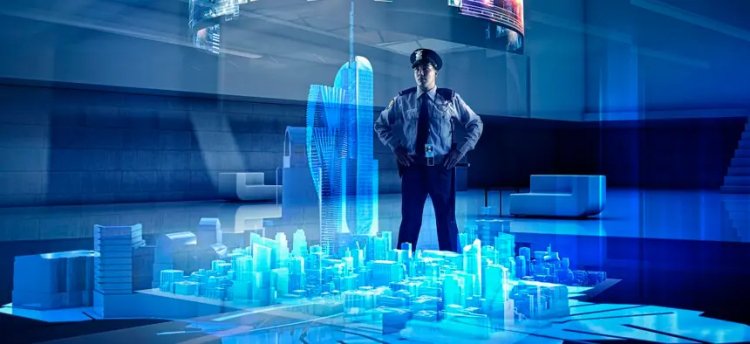The Future of Digital Twin Technology upsc

“Explore the world of Digital Twin technology with our comprehensive blog post. Learn about its evolution, impact on various industries, and future potential. Dive into how this cutting-edge technology is transforming our world, from manufacturing to healthcare.”
The Evolution and Impact of Digital Twin Technology
In the dynamic world of technology, one concept has recently been making waves: the Digital Twin. This cutting-edge technology is transforming various sectors from manufacturing to healthcare, enhancing efficiency and offering unprecedented insights into processes and systems. But what exactly is a Digital Twin, and how is it reshaping our world? Let’s delve deeper.
What is a Digital Twin?
A Digital Twin is essentially a virtual replica of a physical entity or system. It mirrors the real-world counterpart in a digital platform, enabling real-time tracking, monitoring, and simulation. This technology leverages data, machine learning, and artificial intelligence (AI) to gain insights about the performance, functionality, and potential issues within the physical version.
Digital Twins can be created for a variety of entities, from a simple household appliance to an entire city or complex industrial machinery. The goal is to have a dynamic, virtual representation that can be tested, analyzed, and optimized without interrupting the real-world counterpart.
The Evolution of Digital Twin Technology
The concept of Digital Twin isn’t entirely new. It has its roots in NASA’s Apollo missions, where full-scale mockups of the spacecraft were used for problem-solving and contingency planning. However, the term “Digital Twin” was coined in 2002 by Dr. Michael Grieves at the University of Michigan.
With advancements in IoT (Internet of Things), AI, and big data analytics, Digital Twin technology has evolved significantly. Today, it’s not just about creating a digital replica, but also harnessing the power of data to predict future scenarios, optimize operations, and drive innovation.
The Impact of Digital Twin Technology

Digital Twin technology is revolutionizing various industries. Here are some examples:
- Manufacturing: Digital Twins can simulate production processes, identify bottlenecks, and suggest improvements, leading to increased efficiency and reduced costs.
- Healthcare: In healthcare, Digital Twins of patients can be created using their health data. These can help in personalized treatment plans and predicting potential health issues.
- Smart Cities: Digital Twins of cities can aid in urban planning, energy management, and disaster mitigation.
- Retail: Retailers can use Digital Twins to optimize their supply chain, manage inventory, and enhance the customer shopping experience.
What are the challenges that can be addressed by leveraging the capabilities of a digital twin?
Digital Twin technology has the potential to address several challenges faced by industries and organizations. Some of these challenges include:
- Predictive Maintenance: With Digital Twins, real-time data from physical assets can be analyzed to predict potential malfunctions or breakdowns, allowing for proactive maintenance and reducing downtime.
- Efficiency and Optimization: By simulating processes and systems in a virtual environment, Digital Twins can identify inefficiencies and suggest optimizations for enhanced performance.
- Cost Reduction: With better insights and predictive capabilities, organizations can reduce costs associated with maintenance, downtime, and energy consumption.
- Innovation: The ability to test and simulate different scenarios in a digital platform empowers organizations to innovate and find new ways of improving operations and products.
The Future of Digital Twin Technology
The future of Digital Twin technology looks promising. According to a report by MarketsandMarkets, the Digital Twin market size is expected to grow from USD 3.1 billion in 2020 to USD 48.2 billion by 2026, at a Compound Annual Growth Rate (CAGR) of 58.1% during the forecast period.
As technology continues to advance, we can expect Digital Twins to become more sophisticated, offering even greater insights and efficiencies. They could play a key role in achieving sustainability goals, enhancing customer experiences, and driving economic growth.
However, as with any technology, there are challenges to overcome, including data security and privacy concerns. It’s crucial for businesses and governments to address these issues as they navigate the exciting world of Digital Twin technology.
In conclusion, Digital Twin technology is more than just a buzzword—it’s a powerful tool that is transforming our world. By bridging the gap between the physical and digital realms, it offers unprecedented opportunities for innovation, optimization, and growth.
What's Your Reaction?















